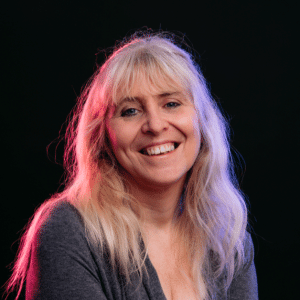
Lynn Strongin Dodds looks at how FCMs are taking advantage of the higher interest rate environment and how the derivatives central clearing space is impacted.
Although the tighter monetary policy of the past year has hampered certain sections of the financial service sector, the reverse is true for Futures Commission Merchants (FCMs) who are enjoying a revival. They are not only expanding their product menu and geographies but also forging new clearing memberships, according to a recent report – The Growing Opportunity in Derivatives Clearing’, published by Acuiti in conjunction with ION.
“What we are seeing is firms wanting to build upon what they have as well as expand the number of asset classes they trade,” says Jo Burnham, risk and margining SME at OpenGamma. “As a result, they are increasing the number of clearing relationships to optimise the processes, protect themselves and reduce the liquidity risks.”

Joshua Hurley, director at Sionic notes that there has been increased activity in a wide range of products including carbon markets, energy transition, crypto assets and options. Retail activity has also remained high on the exchanges since 2020.
Options have been particularly popular with recent figures from CBOE showing that in June alone trading in index options jumped almost 38% for the month and 43% for the year.
Ross Lancaster, head of research at Acuiti, notes that there has been a significant and abrupt change in the economies of providing clearing services in derivatives markets over the past decade. “This is resulting in existing FCMs seeking to broaden their offerings, and new entrants eyeing launches,” he adds. “The market needs more FCMs, and the continuation of the current conditions is likely to reverse the long-term declines in the number of firms providing services to the market.”
“The market needs more FCMs, and the continuation of the current conditions is likely to reverse the long-term declines in the number of firms providing services to the market.”
Ross Lancaster, Acuiti
The report notes that during the fallow years after the global financial crisis, when only a handful of firms adopted FCM licenses. Overall, the total number of FCMs globally plummeted from 170 before the global financial crisis to 70 today. The handful that did apply during those years mainly hailed from a similar retail background such as TD Ameritrade, Charles Schwab and E*Trade.
The study, which canvassed 61 senior executives from firms including FCMs, tier 1 and 2 banks and regional banks, found that a combination of higher interest rates and bumper volumes for exchange traded derivatives (ETDs) provided a much-needed fillip.
Last year, 839 bn contracts were traded, a significant increase from the 25.2 bn in 2022. The growth was not only in developed but also emerging markets which explains why FCMs are casting their nets and looking to join the membership clubs at a variety of exchanges and central counterparties (CCPs) in the next three years. This includes Chinese, Brazilian, Mexican and Polish exchanges, as well as some new regulated cryptocurrency markets.

They also plan to further mine the higher interest rate landscape for growth. “Around 40% of FCMs in the study are hoping to generate additional money by increasing their spreads,” says Will Mitting, founder and CEO of Acuiti. This was virtually impossible during the prolonged low interest rate landscape. Typically, FCMs offer clients a spread on the margin they hold on to their behalf which is calculated at an agreed rate below the interbank rate. This is usually around 75-150 basis points.
“Typically, when rates were 0.5%, clients get no interest at all but when they rise above 1-1.5%, they start to get a rebate,” says Mitting. Based on FIA CCP data, The report noted that the level of margin held at the major global CCPs is just over $1trn while the proportion of cash collateral held by FCMs on behalf of their clients is expected to be worth hundreds of millions of dollars in interest income. Clients are seeing significant rebates at the current lofty interest rates and FCMs want capture some of that cash.
However, it is not just the usual suspects but a new generation of FCMs that are throwing their hat into the ring. They range from retail brokers to crypto exchanges and in some cases, institutional investors specialising in commodities.
Market participants believe competition will benefit the whole market in improving services and minimising the concentration risk that has built up among the largest FCM’s. However, as the report notes, there will be hurdles along the way. “FCMs want to increase their memberships to deliver more products to clients,” says Jerome Kemp, president of Baton Systems.” However, while higher interest rates present an enhanced revenue generating opportunity for FCMs, they also add operational challenges to the margining process. FCMs have to optimise the mix of cash and non-cash they post to satisfy margin requirements across their CCP memberships. They need to be able to manage their positions and flow in a seamless and real time manner.”
“FCMs want to increase their memberships to deliver more products to clients…. However, while higher interest rates present an enhanced revenue generating opportunity for FCMs, they also add operational challenges to the margining process. FCMs have to optimise the mix of cash and non-cash they post to satisfy margin requirements across their CCP memberships. They need to be able to manage their positions and flow in a seamless and real time manner.”
Jerome Kemp, president of Baton Systems
Kemp also notes that that the infrastructure and ecosystem needs to evolve. He points to manual processes and a lack of transparency of the data being the main stumbling blocks.” The inability to quickly mobilise and move both cash and securities carry an opportunity cost that FCMs should be addressing,” he adds. “They should also be looking carefully at the data issues and how they can better access, aggregate, normalise and optimise real-time data across the universe of its memberships.”
The nuts and bolts of joining may also not be straightforward. For example, as the report says, the process of onboarding to new exchanges and CCPs can be a multi-year one. Technology, connectivity, licence fees with vendors and legal fees are expensive and time consuming. In addition, operational costs are also high, with training required to ensure staff are able to manage clearing processes with different CCPs. This is not even mentioning the issues around default fund contributions and other upfront costs that are often tied to new memberships.
However, there are prospects for growth for those CCPs who can iron out these problems and enhance their services. For example, Hurley believes that CCPs have opportunities to expand certain offerings such as repo and in general become a one stop shop for clients, particularly for those derivative traders who want everything in one place. Attracting new business “will come down to efficiency, high quality service delivery, technology and data driven products,” he adds.

